
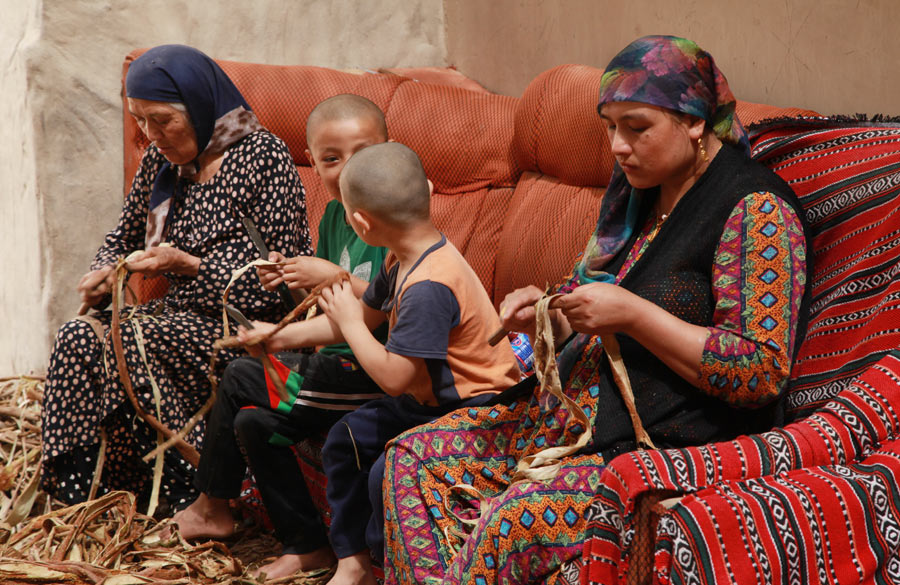 |
|
Women and children peel mulberry bark in a village in Moyu county, Hotan prefecture, Xinjiang Uygur autonomous region. [Photo by Qin Fengjing/provided to chinadaily.com.cn] |
What is mulberry paper?
Mulberry paper making is a traditional handicraft of the Uyghur people in China's Xinjiang. It is handmade and today only a few families still produce it.
The finished product is graded as high, medium, or low, according to quality. In the Qing Dynasty (1644-1911 AD), books and brochures were mainly printed with high-quality paper in Xinjiang. It was also used to print money during the period of the Republic of China (1912-1949 AD). Medium grade paper was mainly used for packing tea and herbal medicine, while low quality, rough paper was used as a subsidiary material to make shoes or clothes.
Today it is more often used for writing and painting, which can last for more than 1,000 years, according to Tursunbaher Tohtibahi, the 11th inheritor of the handicraft.
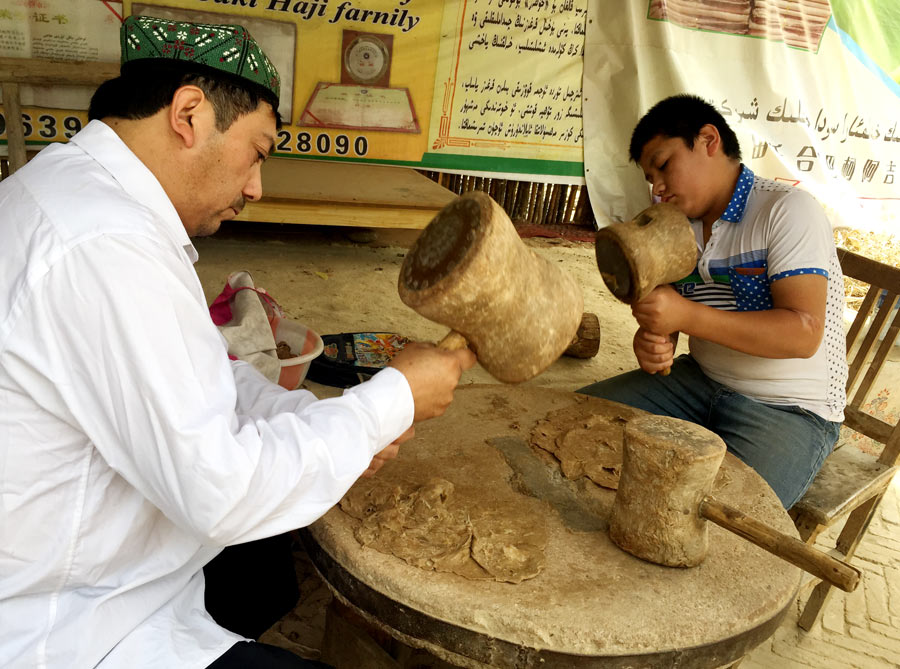 |
|
Tursunbaher Tohtibahi and a boy beat the bark after it is boiled and soaked in his workshop in Moyu county. [Photo by Bi Nan/chinadaily.com.cn] |
Tursunbaher Tohtibahi is the 11th inheritor of the handicraft. As it needs much labor, he is training local students for free and hopes to foster more talent to pass down the handicraft.
With help from the local government, he has taken part in several trade fairs and the market is opening wider to him. His mulberry paper has been exported to East Asia, the US, Japan and Saudi Arabia.
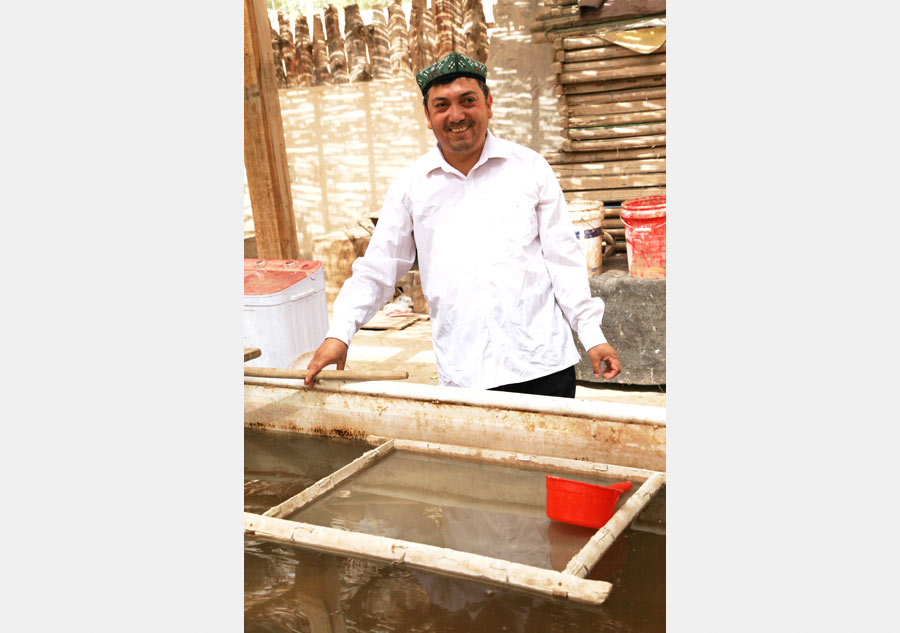 |
|
Tursunbaher Tohtibahi stands in front of a pool for making mulberry paper. [Photo by Qin Fengjing/provided to chinadaily.com.cn] |
How has it evolved?
According to historical records, the technique dates back to the Tang Dynasty. Relics have shown that mulberry paper was widely used in Xinjiang. Since the 1980s, industrialization of papermaking has changed and traditional techniques have faded out and many craftsmen have left the industry.
Things began to change in 2006 when the handicraft was listed as a national intangible cultural heritage and the "living fossil" was revived and began to be passed down.
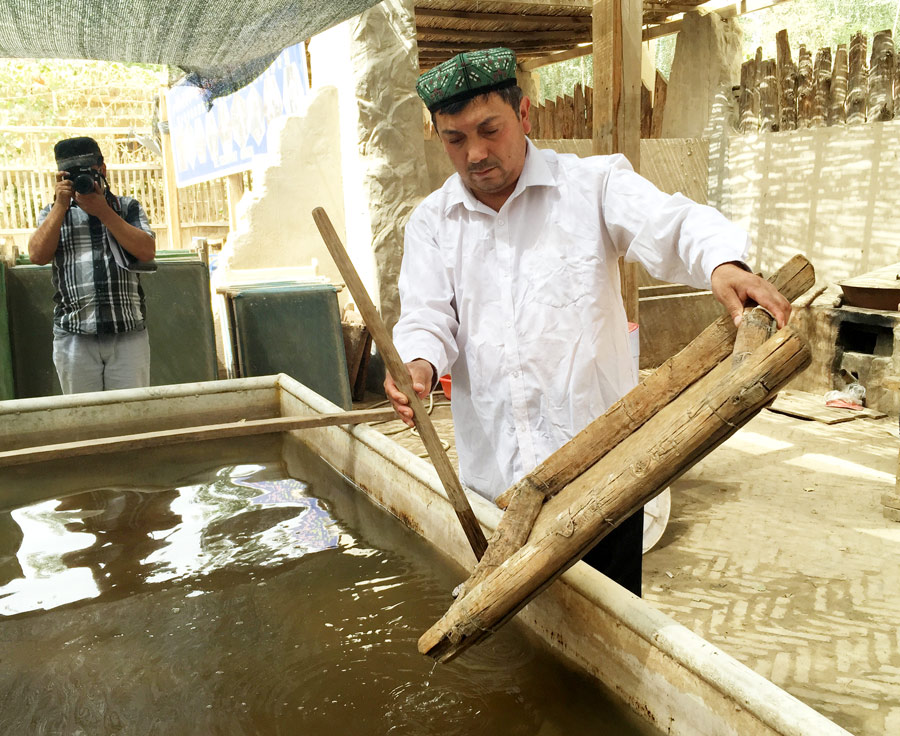 |
|
Tursunbaher Tohtibahi puts paper pulp into a mould after it has been filtered. [Photo by Bi Nan/chinadaily.com.cn] |
How it is made?
The raw material is mulberry tree bark, and it takes nine procedures, all by hand. The process is laborious and time consuming, which partly explains why it remains rare.
The inner skin of the bark is glutinous and the fiber is fine and smooth, hence it is easy to process. The bark is peeled, soaked, boiled, beaten, fermented, filtered, molded and dried, before being made into paper.
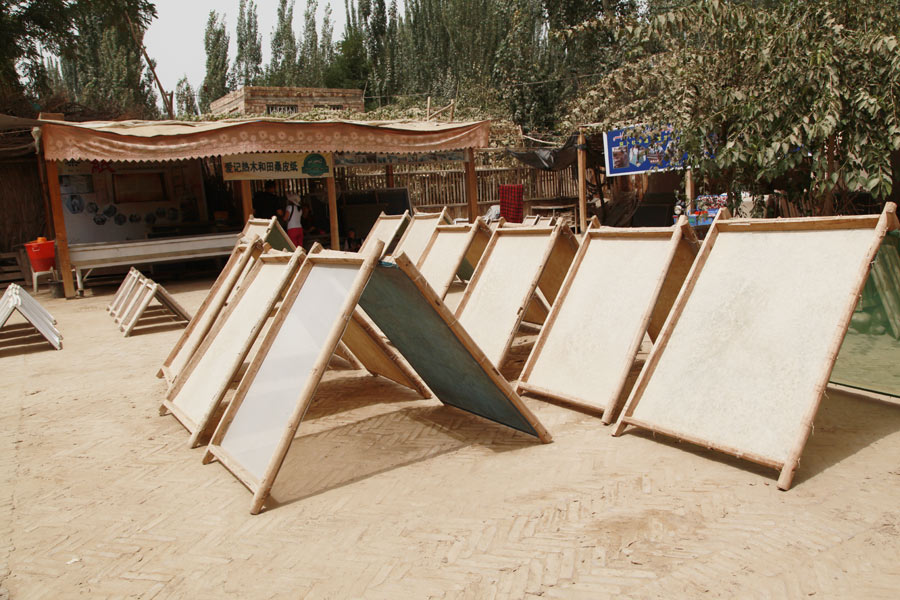 |
|
Moulds holding paper pulp are dried under the sun. [Photo by Qin Fengjing/provided to chinadaily.com.cn] |
 |
|
Dry paper is peeled from the mould. [Photo by Qin Fengjing/provided to chinadaily.com.cn] |
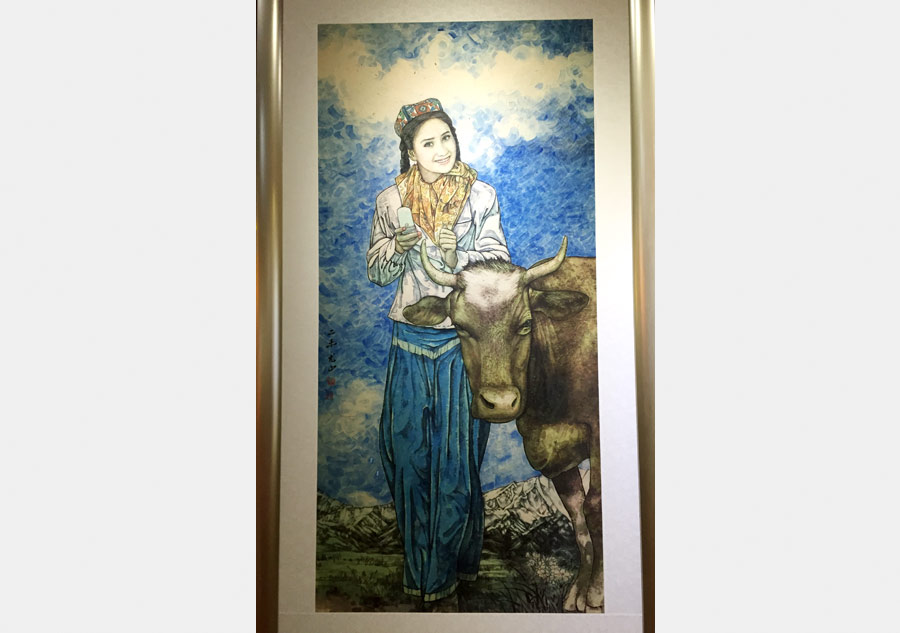 |
|
A Chinese painting on mulberry paper in an art gallery in Xinjiang. [Photo by Bi Nan/chinadaily.com.cn] |
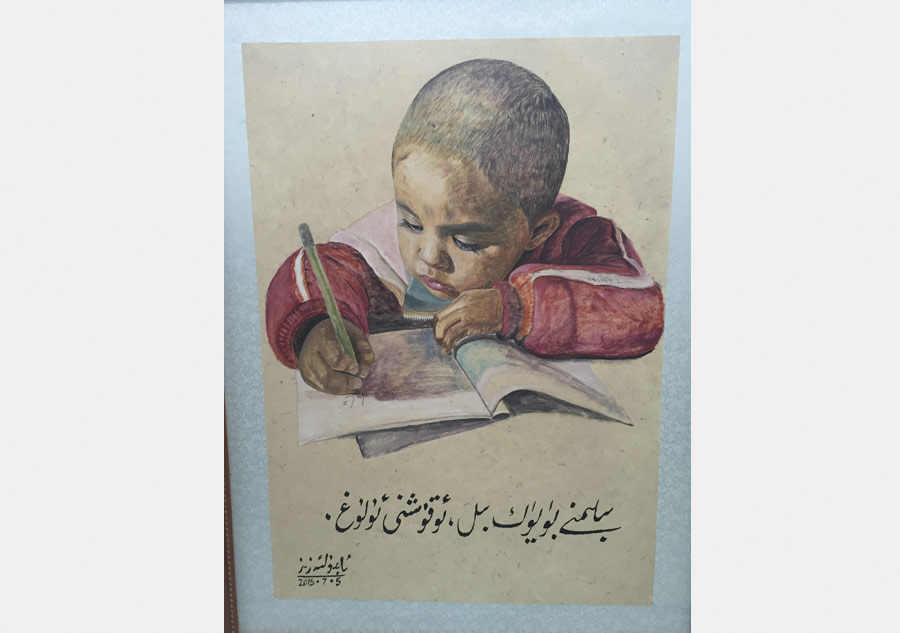 |
|
A painting on mulberry paper in an art gallery in Xinjiang. [Photo by Bi Nan/chinadaily.com.cn] |

Presented by Chinadaily.com.cn Registration Number: 10023870-7
Copyright © Ministry of Culture, P.R.China. All rights reserved